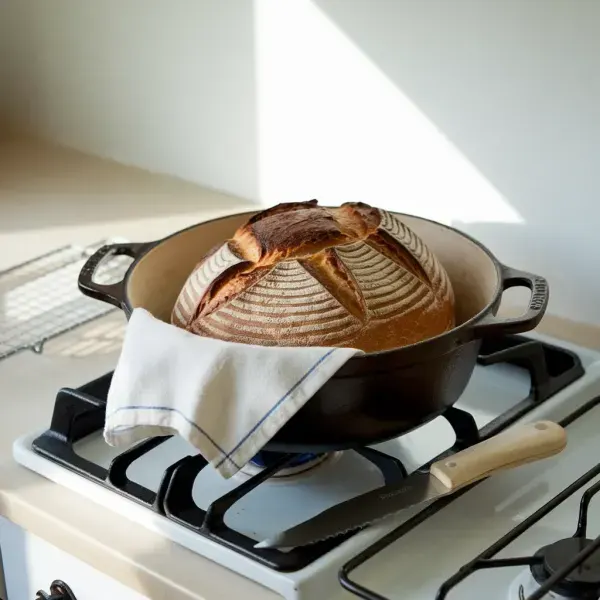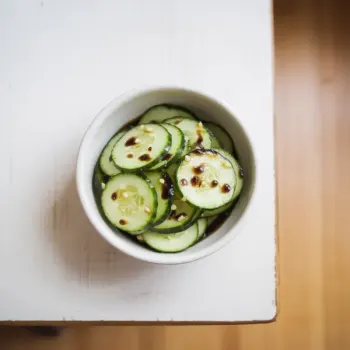
 1510 minutes
1510 minutesA rustic and flavorful country bread with a crisp crust and tender crumb, following the famous Tartine Bakery recipe.


White-Bread Flour
cups
cups
0.25 fluid ounces
teaspoons
tablespoons
1. Create the Starter
Combine equal parts of white-bread flour and whole-wheat flour in a jar with a bit of warm water to create a thick batter. Cover with a towel and leave to ferment for 2 to 3 days until bubbling.
2. Maintain the Starter
Each day for about a week, discard 80% of the starter and replenish it with fresh white-bread flour and warm water. Look for a sour aroma and a rise-and-fall pattern.
3. Create the Leaven
Mix a spoonful of the mature starter with warm water and the white-wheat flour blend. Let rest for about 12 hours or until a spoonful of it can float in water.
4. Mix the Dough
Mix the leaven with warm water, then add white-bread flour and whole-wheat flour until there are no dry spots. Rest for 25 to 40 minutes for hydration and gluten development.
5. Add Salt and Water
Add fine sea salt and a little warm water to the dough. Work in the ingredients until the dough becomes cohesive.
6. Bulk Fermentation
Let the dough rise for about 3 hours, giving it a gentle fold every 30 minutes. The dough should increase by 20-30% in volume.
7. Divide and Shape
Divide the dough into taut rounds and let rest for 30 minutes. Prepare baskets or bowls lined with towels dusted with a blend of whole-wheat and rice flour.
8. Final Proof
Place the dough seam-side up into the prepared baskets. Let rise for 3-4 hours in a warm spot or 10-12 hours in the refrigerator.
9. Bake the Bread
Preheat Dutch oven to 500 degrees Fahrenheit. Place loaf in pot, score, cover, and bake for 20 minutes. Uncover, reduce to 450 degrees Fahrenheit, bake for another 20 minutes.
10. Cool the Bread
Cool the bread on a wire rack for at least 15 minutes before slicing. Repeat baking with the second loaf.
Ensure your sourdough starter is at peak activity before baking. It should double in size within 4 to 6 hours of feeding and have plenty of bubbles.
Preheat your Dutch oven for optimal steam generation, starting with the lid on for steam, then removing it to develop the crust color.
Allow the dough to almost double in size during bulk fermentation, which could take 3 to 5 hours depending on conditions. Look for large bubbles on the surface and along the sides.
Allow your flour and water to rest during the autolyse phase to hydrate the flour and develop gluten, which leads to better structure and texture. Aim for at least 30 minutes, up to an hour or more.
Handle the dough gently when shaping to maintain gas pockets for an open crumb. Use a light touch to avoid degassing the dough too much.




Comments (0)